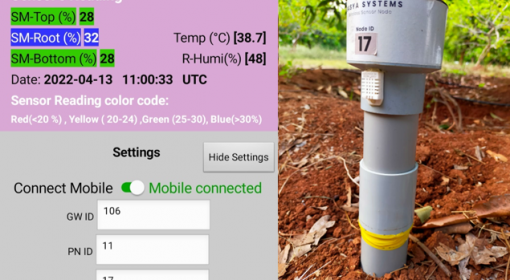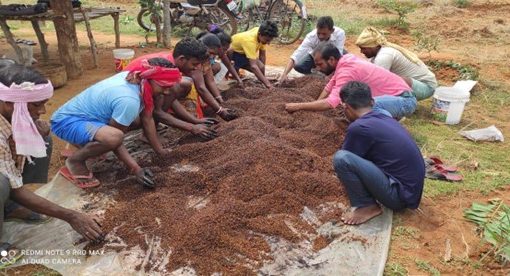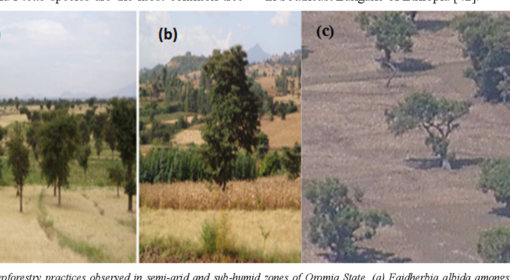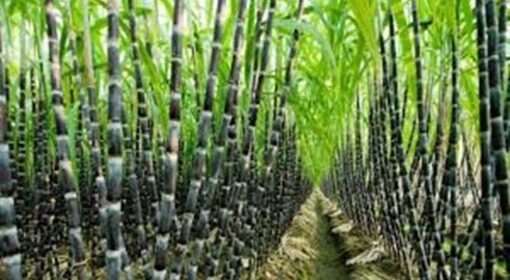Author: K.S. Gopal
ksgopal1952@gmail.com
www.cechyderabad.org
This is the first in a series of blogposts describing the development and implementation of water–saving solutions in India. The innovations were developed by KS Gopal, founder and director of the Centre for Environment Concerns. It describes the journey to reduce the use of irrigation water for farming following the 5M concept:
- Moisture at plant root zone (part 1)
- Measured Moisture for water efficiency & savings (part 2)
- Microbes for healthy soils (part 3)
- Mycorrhizae for root health and synergy to maximise plant nutrient uptake (part 3)
- Management of farm operations for confidence and preparedness (part 4)
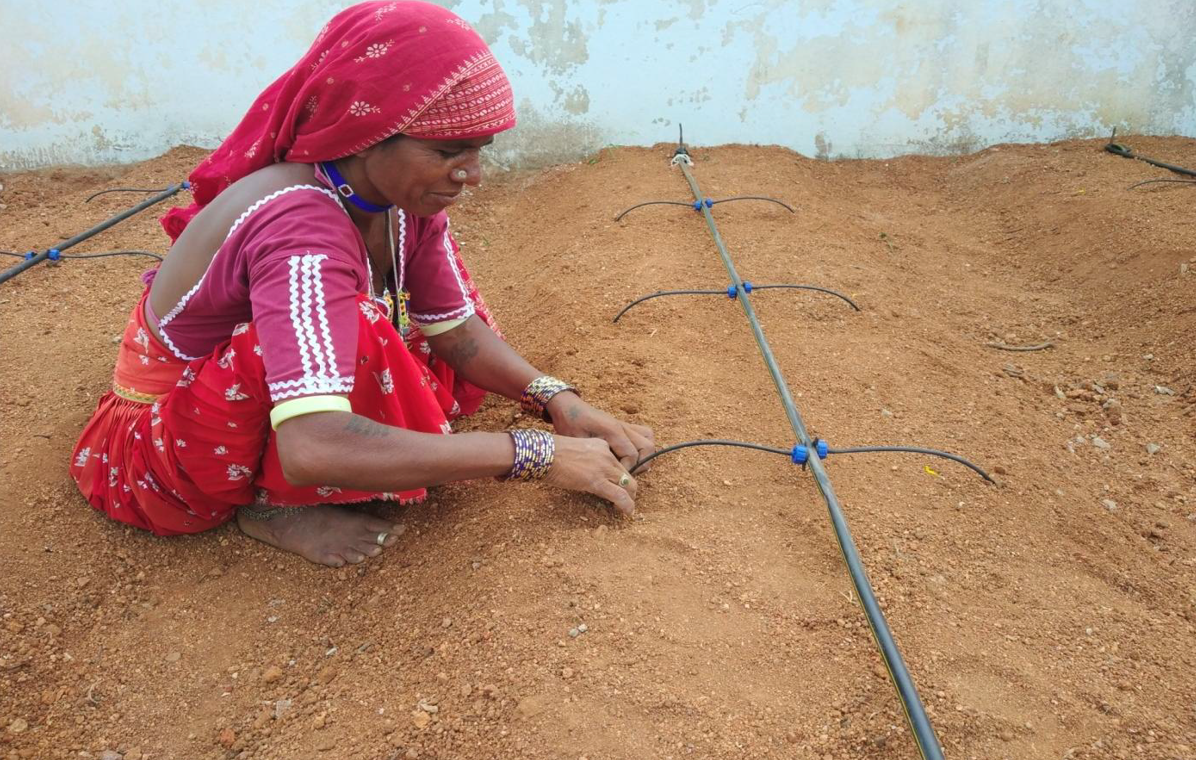
Groundwater is used to grow high-value crops of fruits, vegetables, flowers; and in agro-forestry, whose demand is rising. As trees grow, they need more water even as rising and prolonged heat waves accentuate the demand for plant water, especially in the summer months. Most fruit trees mature to peak yield phase and fetch high income only after 3 to 5 years but are starved of water in summer. The farmer retains a few high productivity trees and lets the others wither, dry and die. To salvage the situation, some farmers buy tanker water. As the drip system does not work with tanker water, they adopt the flood method using large quantities of purchased water. With the change in irrigation regime from drip to flood, trees cannot adapt and die despite applying copious amounts of water. The purchase of water tankers by farmers and highways and government for public space plantations dramatically increase local rural household water costs.
Here is a picture of a thirty-year-old mango farm of Tippa Reddy of Buchayyagaripalli in Bukkapatnam Mandal, Anantapur district in Andhra Pradesh. He used drip but in 2016 the borewell yield was low. To supplement water and to keep fruit trees alive in summer months, he spent INR 1.45 lakhs (USD 2000) to buy tanker water for his mango orchard. In 2017 his entire plantation dried up. When asked to show his farm, he said “No sir, on seeing my full-grown high yielding fruit trees die, I will commit suicide”. Upon seeing the farm, our farmer’s team wept inconsolably.
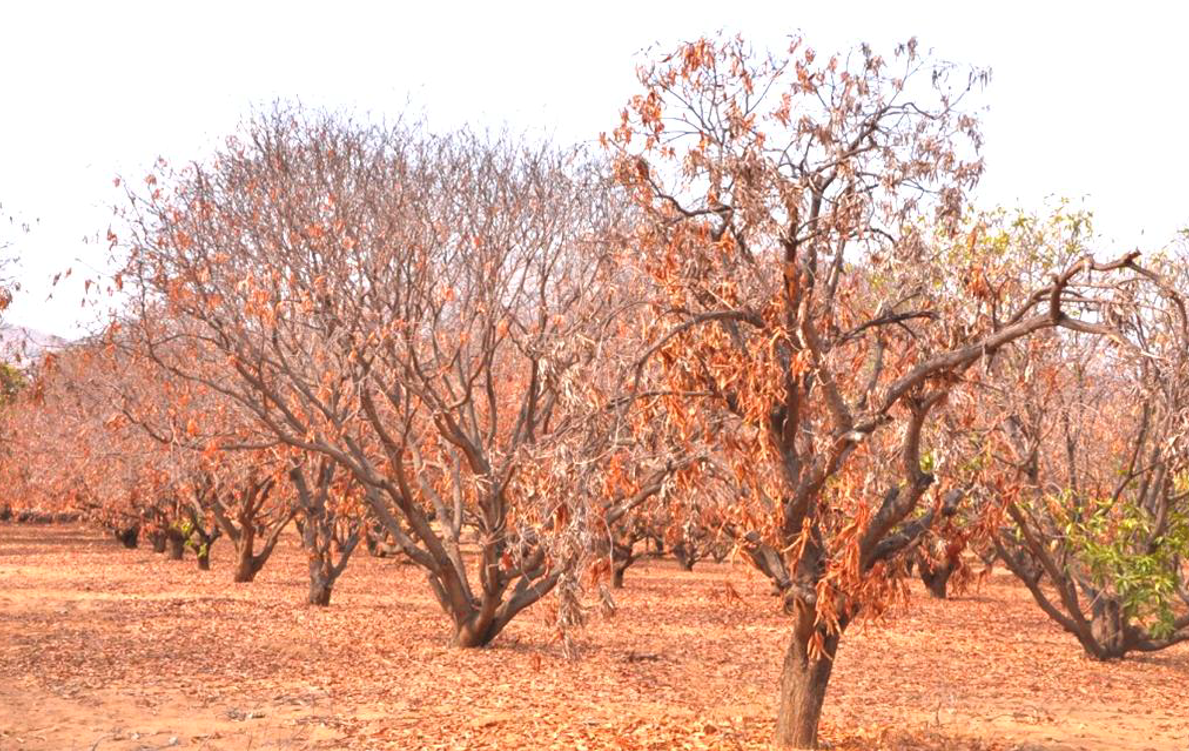
Horticulture plantation is a major investment in the MGNREGS (National Rural Employment Guarantee Scheme) in India. Farm ponds are dug as a water source. I saw this as a good opportunity for poor farmers as there is considerable appreciation in land value, which bodes well as collateral to loans and for social and self-image. In plantations, MGNREGA provides wages to water plants. Women (mostly old) carry water by their head loads of 15-20 liters per trip, to irrigate one plant. We designed a 200-liter rickshaw tires-based trolley that suits farm terrains to deliver water to 10 to 15 plants in one trip. The trolley could also carry other material of up to 200 kg. In MGNREGA, wage payment is based on a count of surviving plants. To fetch water in the key summer months, women had to walk a long distance in the scorching sun, faced difficulties in finding a water source, or had to wait a long time to collect or pay for it. The trolley was no solution and we had to find ways to reduce plant water use to survive and grow and yield.
The state of affairs is that drip irrigation is the “state of the art” in water use efficiency and savings, in theory. However, in farmers’ practice of drip irrigation, they apply 60-70% excess water compared to campus trials and field recommendations by scientists. They remove the dripper that controls water flow. When asked why they use drip, farmers said: “not to reduce water application but to eliminate labour costs in flood irrigation… and because it is cheap with subsidies.”
India is a tropical country with recurring drought, depleting groundwater, scorching summer and rising of heat waves. This fact led me to wonder: why do drip systems apply water on the soil surface when it is actually needed at the plant root zone? There was a clear need for technology/innovation to provide water during summer to maximise yield and water allocation to keep fruits trees alive and later rejuvenate them during the monsoons.
And therefore, along with the farmers as collaborators and co-designers, we developed criteria and architecture of low-water “ideal irrigation” for fruit, flower, forestry, and vegetable farms in groundwater scarce areas using drip systems. Given below are agreed-upon views and how we addressed them over time.
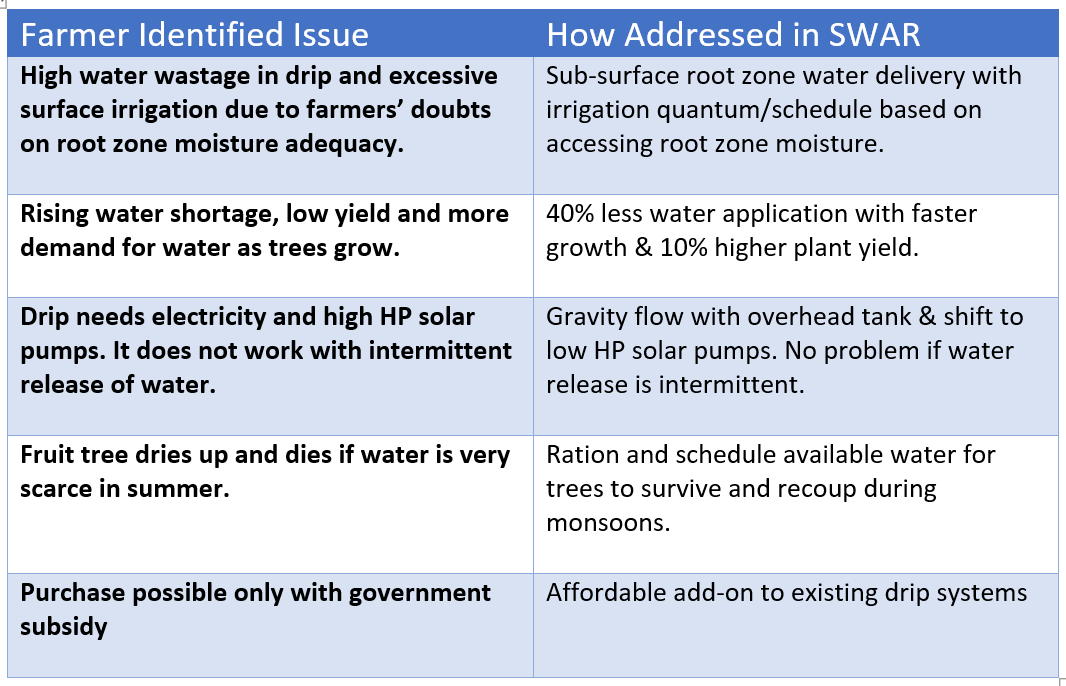
This was our design reference. Our quest was to find ways for subsurface root zone irrigation centred on moisture. Traditionally root zone irrigation uses buried clay pots as water-efficient technology. We put cotton wicks on the sides and bottom of the pot, but this only led to clogging due to salt accumulation in the wicks. We placed twenty-litre plastic containers over the clay pot but found moss formation due to exposure to sunlight. Other problems: use of high-quality topsoil to make the pots, no scope to control pot sweating properties or to control the temperature and heating duration in its production, variations in locally available clay and mix and breakage in transport or while the land is ploughed, etc. Most crucially, our interest was in using an improved system on fruit trees where the water supply is moderated and adjusted to suit different plant species, ages, different levels of plant yield during its life cycle, soil types, and different kinds of nutrient application. The clay pots are ideal for seed-based forestry species.
So we went back to the drawing board with the task to develop a buried system with slow water release which is able to spread water homogeneously through the soil profiles. The system had to be resistant to root invasion and work in all soils.
Our product innovation is the System of Water for Agriculture Rejuvenation (SWAR). It is first-of-its-kind “moisture at plant root zone irrigation technology” requiring 50% less water compared to scientists’ recommendations in drip systems. It is a low-cost buried plastic moisture diffuser, as an add-on to drip laterals. The add-on, essentially, is a special dripper from where the water is sent via a micro-tube into a box containing granular cut size quartz. Using design software we arrived at the ideal box size, shape, and height to release water slowly and maximize moisture spread.
The moisture diffuser works in two ways: When water is applied in the subsoil perforated diffuser box, two forces act upon the movement of moisture within the soil. Forces of gravity move the water downwards, while capillary action moves the water radially and outwards to cover a wider root spread area. To read approximate moisture levels at the root zone we provided a 12-inch portable depth moisture probes, so that farmers could regularly find root zone moisture levels, and plan the water supply and irrigation schedule.
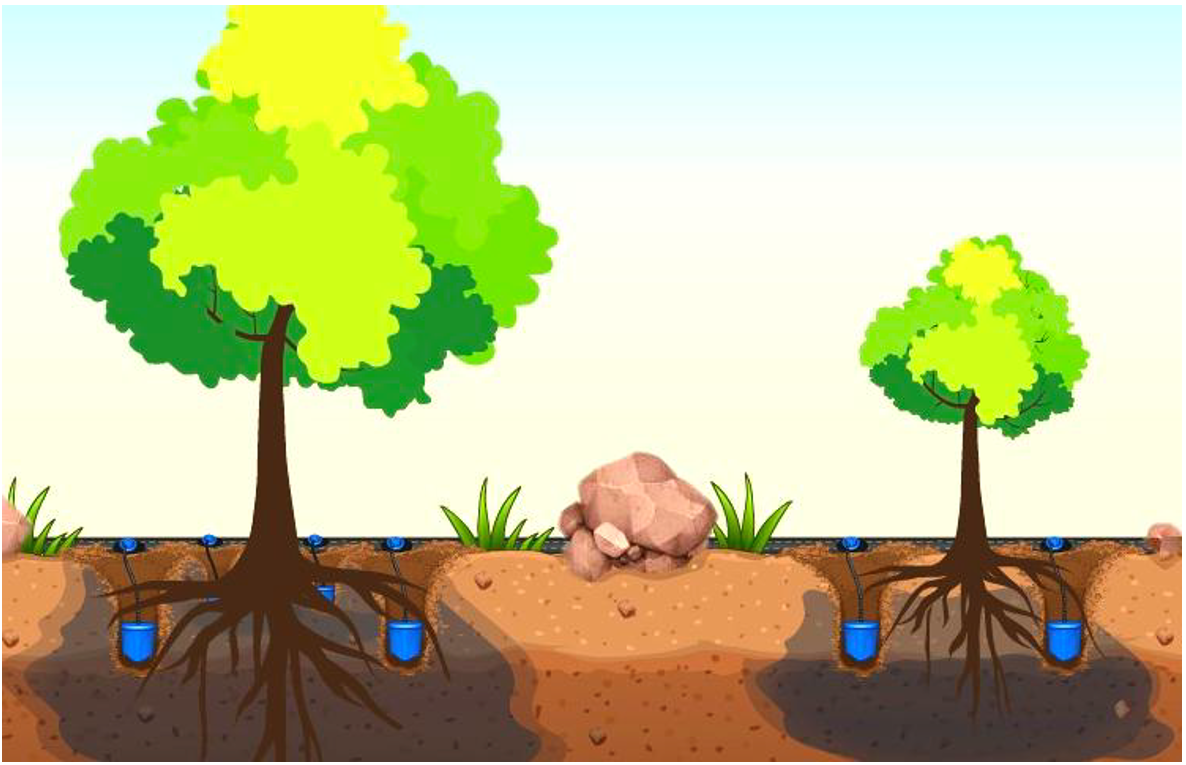
Based on plant species, variety, and age we make recommendations to farmers regarding the numbers and locations of SWAR in the sub-soil. Vegetables and flowers need one unit while forestry; while newly planted fruit trees require two, embedded on either side of and away from the trunk; and four in case of yielding fruit trees. In the case of certain species, SWAR is embedded at a shallow level in the soil while in other cases it is buried to a depth up to 18-20 inches in the subsoil.
In 2019, an extension agency of Indian Council Agriculture Research (BCT Krishi Vigyan Kendra, Vizag in AP) undertook on- campus field trials of SWAR in comparison to drip system on three vegetable crops. The study found that, compared to drip, SWAR uses 40-45% less water and allows 10% higher yield, while inducing early flowering and richer foliage, more branches, higher root-to-shoot ratio, and very little weed growth.
Field trials by independent agencies on multiple fruit and forestry species, small-scale vegetable and flower crops, and in different soils and water regimes further validated previous findings.
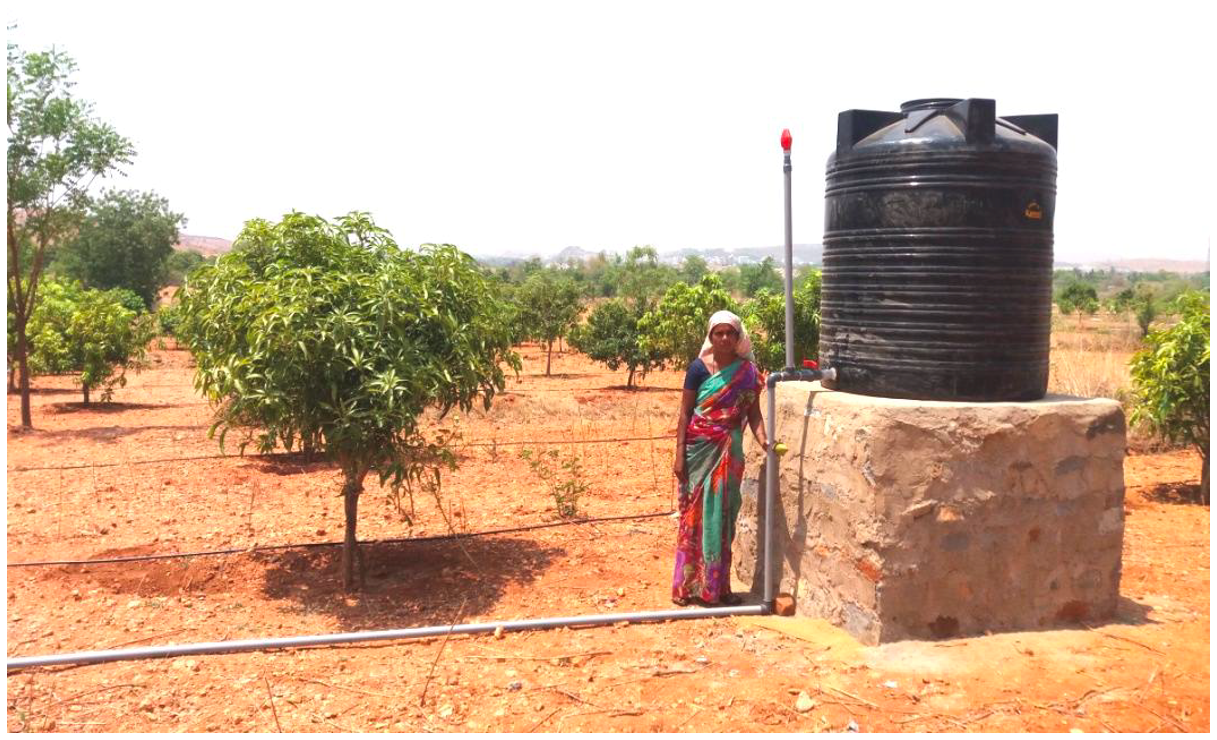
SWAR reduces plants’ nutrients needs by one third. It uses 30% less power to operate and works even if water is partly saline.
In 2019-2020 we sold over sixty thousand SWAR units for the cultivation of a multitude of crops, in different soil types, across several drought-prone locations.


